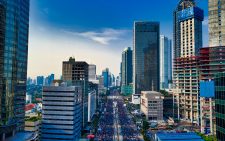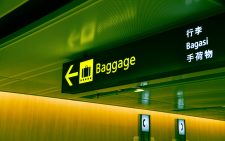Kenya’s economic growth cut to 4.4pc on poll jitters

JPMorgan analysts have downgraded Kenya’s economic growth outlook for this year from IMF’s target of 5.7 per cent to 4.4 per cent on account of elections, closure of the Eurobond window and high current account deficits.
They said they see downside risks to the 5.7 per cent growth number International Monetary Fund (IMF) is forecasting as economic activity tends to slow in the lead-up to elections.
A report by analysts at the global investment bank said with slowing economic growth, tax revenue will naturally come under pressure, exacerbated by an already falling tax buoyancy.
“Due to this, the 8.1 per cent fiscal deficit target for FY22/23 could prove challenging to attain, especially in the context of ongoing fuel subsidies and lofty revenue assumptions,” they said.
Current account
“We also see the current account widening again in 2022, driven by higher oil imports as prices remain elevated,” the report added.
The silver lining is that tourism receipts and remittances continue to surge, which should offer some support to the balance of payments. Kenya also faces sustained high prices of raw material imports given that it is a commodity importer rather than an exporter.
“We maintain our dislike stance on Kenya despite valuations suggesting that the credit is now cheap and positioning now much cleaner. Our view is in line with our preference for commodity exporters over importers, of which Kenya is part of the latter,” the report shows.
Kenya’s trade balance has come under notable pressure since the onset of the Russia- Ukraine conflict as oil prices have surged. Given that Kenya is an oil importer, the impact has been pronounced.
“With oil prices expected to remain in triple dig for the remainder of this year and into 2023 by Morgan Stanley, it’s reasonable to expect the trade deficit (and by extension, the current account) to remain in double digit territory in the short term,” the Morgan Stanley Research quips.
JP Morgan said there are three main factors this year; the proximity of elections, deteriorating current account balance and negative headlines pertaining to foreign exchange shortages.
The silver lining is that Kenya is currently under an IMF financing programme, a status that garners some goodwill given the exogenous shocks (Covid and Russia-Ukraine crisis) that the globe has had to endure.
The IMF in its third review provided a glowing review of the credit despite these headwinds. As such, over Sh100 billion has been disbursed since the inception of the Extended Fund Facility (EFF) and Extended Credit Facility (ECF) facilities.
However, the US bank said private sector credit extension, specifically, will likely fall from the 11.5 per cent reached in April back to single digits as banks will likely show some prudence in extending credit ahead of what may prove to be an eventful election period.
Growth profile
However, despite the pressures, Kenya’s growth profile is still much better than most of sub-Saharan Africa. The relatively shallow recession of 2020 allowed the economy to grow beyond the projected pre-Covid nominal gross domestic product (GDP) trajectory.
This compares favourably to the rest of SSA, whose pre-Covid trajectory is set to be reached in 2025. History tends to suggest that in an election year Kenya’s economic growth slows down by 0.9pp relative to the prior year.
This is not entirely surprising given the history of disruptive and disputed elections in the past. A combination of social unrest and contested elections often causes policy inertia in the public and private sectors, leading to an economic slowdown.












